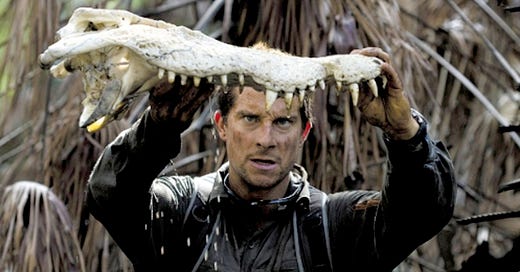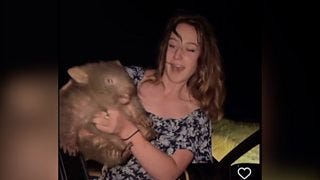Whole weeks pass when I don’t think of my native land, Australia. The news helps, since half the reports from Down Under document floods, bushfires and plagues of noxious life-forms about which one can do little but wring one’s hands.
The remaining bulletins deal with what is, for non-Australians, the most interesting aspect of Australia, its fauna. People who can barely find it on the map are intimately acquainted with kangaroos, koala bears, taipan snakes, platypuses (platypi?) and frill-necked lizards.
Despite this fascination, one Australian animal has not yet enjoyed its share of the limelight. I refer to Vombatus ursinus aka the Common Wombat.
The wombat has none of the glamour of the Tasmanian Devil or Great White Shark. Frankly, it’s a frump. An early explorer described it as "an animal about 20 inches [51 cm] high, with short legs and a thick body with a large head, round ears, and very small eyes; is very fat, and has much the appearance of a badger.”
Vombatus might have remained obscure for another millennium had not American “influencer” Sam Jones, a self-styled "outdoor enthusiast and hunter", had filmed herself recently taking a wild baby wombat – the influencee?- away from its distressed mother.
Jones has since deleted the video from her Instagram page but added a new one in which she insisted the encounter was "not staged, nor was it done for entertainment". This doesn’t square with the original, in which she is seen saying gleefully to the camera "I caught a baby wombat!", while the animal hisses and struggles. The man filming laughs "Look at the mother, it's chasing after her!" A caption reads "My dream of holding a wombat has been realised!"
This event sparked a huge backlash, with Prime Minister Anthony Albanese challenging Jones to "take a baby crocodile from its mother and see how you go there". The Wombat Protection Society said it was shocked to see the "mishandling of a wombat joey in an apparent snatch for 'social media likes'". A petition demanding Jones’s deportation received more than 40,000 signatures, but before the tar could be warmed up and the feathers accumulated, she fled of her own accord.
It’s a while since I’ve been in Australia but I don’t remember people being so protective of the local fauna. At theme parks, our daughter lined up with other children to hold a koala bear, and petting zoos were stocked with domesticated kangaroos and native parrots that would eat out of their hand.
At the other end of the spectrum, considerable energy was also directed at exterminating those creatures which, however cuddly, impeded the cultivation of crops or ate grass needed to fatten up more saleable sheep. Kangaroos were shot in their thousands and turned into pet food, and rabbits – admittedly an introduced species, not native to Australia – infected with the fatal myxomatosis virus.
That impulse is never very far beneath the surface. For every lingeringly affectionate film of Australian animals in the wild, dozens still feature tough guys putting nature in its place. Think of the croc’-wrestling, ‘roo-shooting movie Crocodile Dundee, the series Crocodile Hunter and its front man Steve Irwin, or those fronted by professional outdoors man “Bear" Grylls. Not many bleeding hearts there, except on a spit over on an open fire.
That’s where Jones went wrong. If she had just eaten the wombat…
Bear Grylls, with breakfast.





